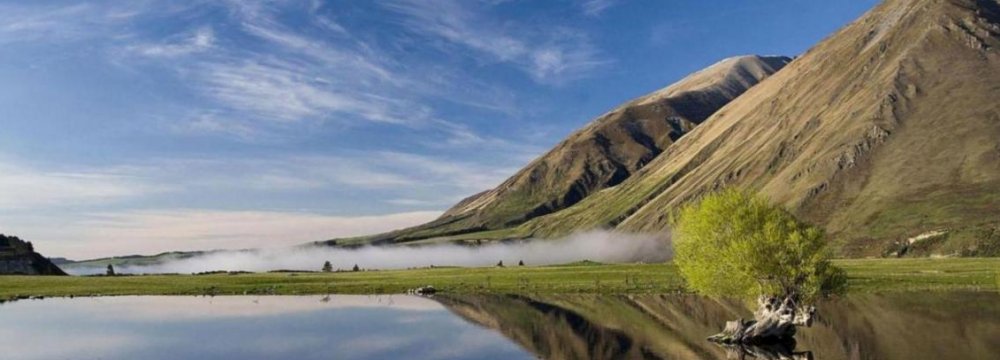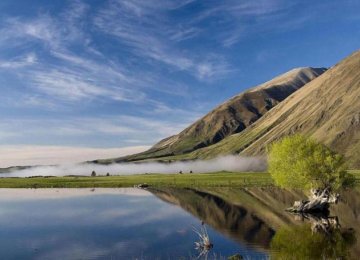A report by the World Tourism Organization has ranked Iran tenth for its ancient and historical attractions and fifth for its natural attractions. It is also considered one of the safest and most secure countries in the region and the world.
In 2006, over 842 million tourists traveled worldwide, 750,000 visited Iran. Experts however, believe the Iranian government has not given the industry the attention it deserves. The lack of proper economic backing to attract investment for hotel construction projects and other required infrastructure for the industry, insufficient marketing and advertising of Iran’s tourism potential, and the negative image of Iran in the western media are among the reasons that have not allowed tourism to flourish.
The Persian daily Forsat Emruz has taken a comprehensive look at Iran’s tourism industry based on the regions and their potential:
North
The Caspian Sea coasts are one of the most significant tourist destinations for both domestic and international travelers, and draw numerous visitors annually.
A 700-km long narrow coastline from Astara in Gilan Province, to Grogan in Mazandaran Province, the temperate and humid climate known as “the moderate Caspian climate”, and the sea itself with the appropriate depth and low level of salt in the water, makes the north of Iran a perfect place for swimming, resting, and recreation.
Forests in the southern coasts of the Caspian Sea that skirts the Alborz Mountains, with the rich relic and endemic plant species, create a memorable image for travelers driving along the northern roads.
The summer highland pastures of Kelardasht, Valasht Lake, and Anzali lagoon in Mazandaran Province on the east side and on the west side, Masouleh, a city in Gilan Province, are among the most visited places of the north.
Masouleh
The capital city of Sardar-e Jangal district, in Fuman county, Masuleh is surrounded by forest from valley to mount and fog, as the predominant weather feature of it.
The Masuleh architecture is unique. The buildings have been built into the mountain and are interconnected. Courtyards and roofs serve as footpaths. Masuleh is a pedestrian village and does not permit motor vehicles to enter, due to its unique layout. It is the only city in Iran with such a rule.
Sisangan and Golestan National Parks
Another place to visit and enjoy is Sisangan National Park, east of Nowshahr, Mazandaran province. There are facilities for travelers in the forests including wooden tables and benches, gazebos, toilets, and tents for camping. Of course, the facilities are not enough for the large number of visitors who travel there.
There are unfortunately noticeable amount of damage to the environment due to the lack of oversight of the area allowing for abuse by certain visitors and dangerous actions such as setting fire under trees, carving on trees with a knife, and littering the area.
Golestan National Park, Golestan Province, annually receives thousands of visitors. It has a variety of habitats, like temperate broad leaf forests, grasslands, shrubs and rocky areas. The fauna is very rich and consists of leopards, wolves, wild boars, maral deer, roe deer, urial, wild goats, and gazelles.
South
The Persian Gulf and the Strait of Hormuz coastlines in the south of Iran, with hot humid weather is a very good choice to spend holidays especially winter.
The Mangrove forests of Qeshm or Hara forests are only one of so many attractions in the south of Iran which leaves visitors with an unforgettable experience. The trees at Hara forests are salt-water plants that are often submerged at high tide.
They usually blossom and bears fruit from mid-July to August, with yellow flowers and a sweet almond-like fruit.
The area on the north shore of Qeshm and the neighboring mainland is particularly suited to the growth of the plant, and large mangrove forests have developed.
West and Northwest
The snow-covered heights of Alborz and Zagros Mountains are the best places for winter sports. Abali, Dizin, Shemshak, and Tochal are among the best known and visited ski resorts of the Alborz mountain range.
During the summer, foot of the mountain has a temperate weather, spectacular landscapes, waterfalls, fountains, and caves.
The hillsides of Sabalan and Sahand Mounts in Ardabil and East Azerbaijan Provinces, and Mount Damavand in Tehran Province, see countless tourists from within and outside the country.
Most of the mineral-rich spring water and spas are located in areas like Sareyn, Ardabil Province.
Religious Sites
Mashad, embracing the holy shrine of Imam Reza (A.S.), the eighth Imam of Shiites, is the most prominent center for religious tourism in the country with millions of domestic and foreign travelers visiting the city every year.
Apart from the shrine, other sites such as Goharshad Mosque offers tourists with exquisite examples of Islamic architecture and decorative arts like tile works.
As the number of pilgrims has sharply risen, Mashad has many hotels, lodging facilities, restaurants, and recreation centers.
Some other major religious destinations in Iran include: the shrine of Fatimah Masoumeh (A.S.) in Qom, Shah-Abdol-Azim shrine in Rey city (Shahr-e Rey), Tehran Province, Shahcheragh in Shiraz, Fars Province, and Seyed Jala-e-din Ashraf in Astaneh Ashrafiyeh, Gilan Provice.
Historical Monuments and Sites
Fars Province is probably the most visited and a significant tourist hub in terms of ancient historical sites and monuments. There is a large number of places in Fars from the pre-Islamic era such as Persepolis, Naghsh-e Rostam (Necropolis), the ancient city of Estakhr, Pasargadae (the tomb of Cyrus the Great) and others belonging to post-Islamic era like the Vakil complex (including Vakil Mosque, bath, and bazaar), Quran Gate, and the mausoleums of Hafiz and Sa’di.
Isfahan, along with Shiraz, is another major tourist destination and representative of the country’s rich culture and history.
Naqsh-e Jahan Square, Ali Qapu, Imam Khomeini and Sheikh Lotfollah Mosques, Qeysarieh or Soltani bazaar, Siose Pol and Khaju Bridges, and Chehel Sotoun are part of the priceless treasure of various arts and crafts.
Statistics
Between March-Sept. 2012, Iranian provinces which hosted the largest number of tourists were Khorasan Razavi, Ilam, West Azerbaijan, Ardabil, East Azerbaijan, Tehran, Khuzestan, Gilan, Sistan and Baluchestan, and Kordestan.
The main reason for Ilam to rank second in the list is probably that Iraqi visitors enter through the Ilam borders. The same goes for Sistan and Baluchestan where the border is chosen by Afghan and Pakistani travelers.





